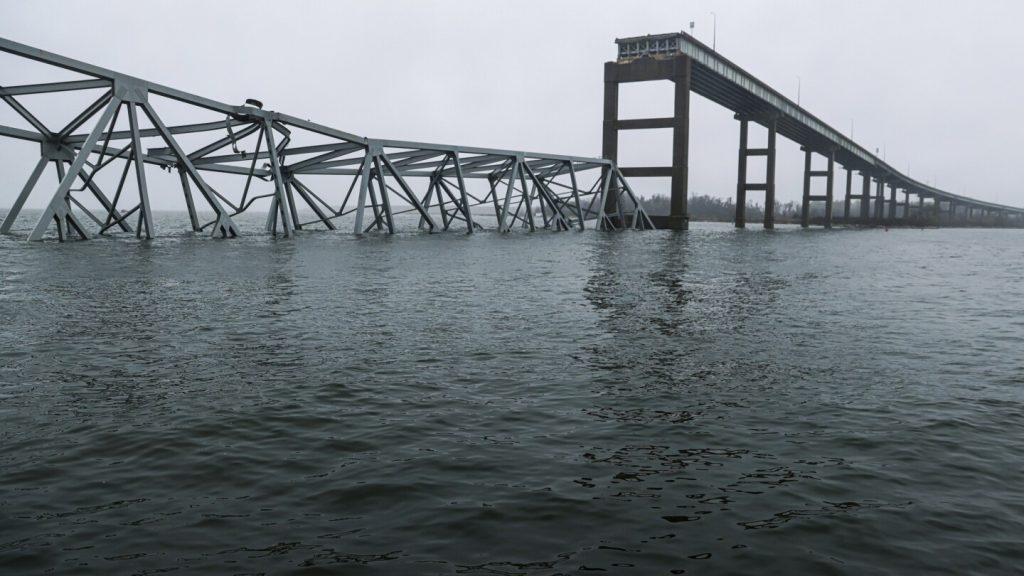The U.S. government is finalizing plans to clear the wreckage of a collapsed bridge in Baltimore that was struck by a cargo ship. Efforts are being made to minimize the economic impact on businesses and workers in the port city’s maritime industry. Questions have been raised about the safety measures in place for the construction workers who tragically lost their lives in the bridge collapse on March 26. Additionally, it has been revealed that a floating crane involved in the cleanup has ties to a top-secret CIA mission during the Cold War.
The U.S. Army Corps of Engineers has outlined its salvage operations plan, which includes stabilizing the cargo ship and removing it, analyzing the debris from the collapsed bridge, and recovering the bodies of the deceased construction workers. Crews have already begun removing debris from the ship and analyzing the wreckage in the water. Weather conditions and poor visibility have made the recovery efforts challenging, but the Corps remains committed to completing the tasks.
Efforts are also being made to support affected businesses and workers in Baltimore. The U.S. Small Business Administration is offering low-interest loans to help businesses stay afloat while the port remains closed to most maritime traffic. The Maryland Senate has approved a bill that would allow the governor to use state funds to assist unemployed port employees and prevent layoffs at small businesses. The goal is to ensure that the local economy can recover once the port reopens.
The lack of proper safety measures for the construction workers has raised concerns about the company’s responsibility. Federal regulations require construction companies to have safety boats on hand when working over waterways, but it appears that the Brawner construction company did not have a rescue boat in place at the time of the collapse. The company is currently focused on supporting the families of the workers who tragically lost their lives.
One of the floating cranes involved in the cleanup operation has a unique history, having played a role in a top-secret CIA mission during the Cold War. The crane assisted in constructing a specialized ship that raised part of a sunken Soviet submarine from the Pacific Ocean. The mission is considered one of the most expensive and daring intelligence operations in U.S. history. The crane, now known as the Chesapeake 1000 or “Chessy,” is one of the largest of its kind on the East Coast and continues to assist in the cleanup efforts in Baltimore.















